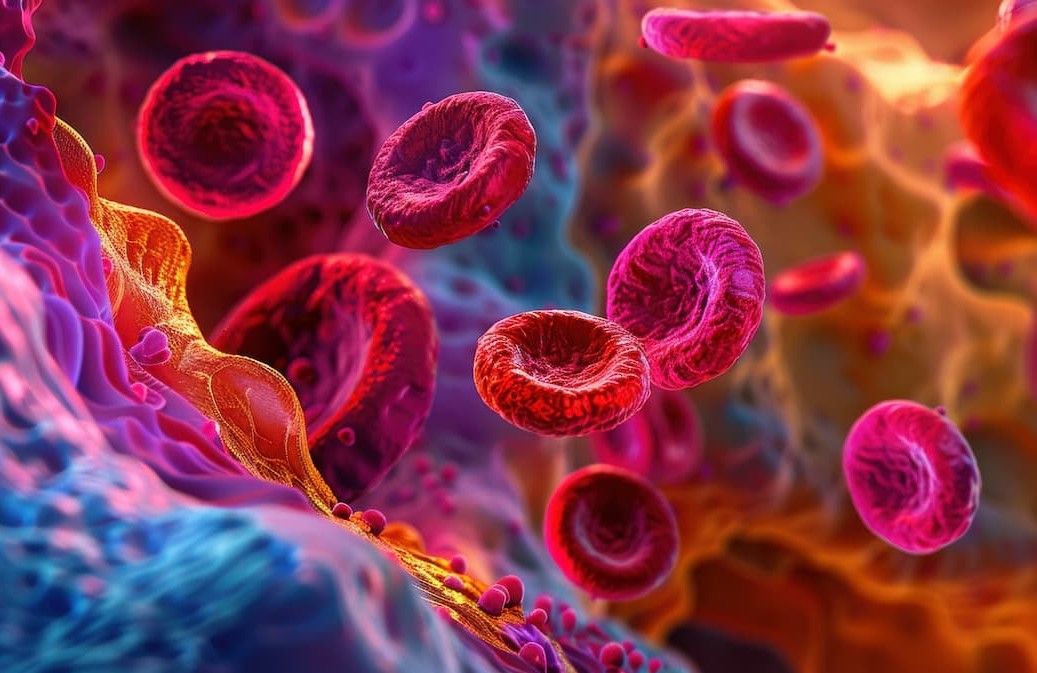News
Article
MRD Status Prior to Allo-HSCT Shows Strong Prognostic Value in AML, MDS
Author(s):
Key Takeaways
- MRD status before allo-HSCT is a strong prognostic factor for OS, DFS, and CIR in AML and MDS patients.
- MRD-negative patients showed significantly better OS and DFS compared to MRD-positive patients, with marked differences in relapse rates.
A study demonstrated that pre-transplant measurable residual disease (MRD) status is a strong prognostic factor for overall survival, disease-free survival, and relapse risk in patients with AML and MDS undergoing allogeneic stem cell transplantation.
A recent study published in Annals of Hematology explored the prognostic significance of measurable residual disease (MRD) assessment prior to allogeneic hematopoietic stem cell transplantation (allo-HSCT) in patients with acute myeloid leukemia (AML) and myelodysplastic syndromes (MDS).1 The monocentric retrospective study, conducted over 20 years from 2000 to 2020, revealed significant differences in outcomes between MRD-negative and MRD-positive patients.
"We confirmed that MRD status prior to allo-HSCT is a strong prognostic factor for overall survival (OS), disease-free survival (DFS), and cumulative incidence of relapse (CIR)," the authors concluded, emphasizing the critical role of pre-transplant MRD assessment in clinical decision-making.
MRD ahead of allo-HSCT showed prognostic value in patients with AML and MDS. | Image credit: keetazalay - stock.adobe.com

The study included 192 patients who underwent allo-HSCT in complete remission (CR) or CR with incomplete hematologic recovery. The researchers evaluated the impact of pre-transplant MRD status on long-term prognosis, comparing multiparametric flow cytometry (MFC) and PCR-based techniques for MRD quantification.
The study found that MRD-negative patients had markedly better OS and DFS compared with their MRD-positive counterparts, with a median OS of 130.6 months for MRD-negative patients versus just 16.0 months for MRD-positive patients (P < .001). Similarly, the median DFS was 109.6 months for MRD-negative patients, compared with only 7.1 months for those with MRD positivity (P < .001).
CIR at 12 months also varied significantly by MRD status, with MRD-negative patients experiencing a relapse rate of 7.3% (95%CI, 3.2-13.6), while MRD-positive patients had a much higher rate of 33.7% (95%CI, 24.3-43.3; P < .0001). This significant difference in CIR was observed across various subgroups, including patients with AML younger than 60 years (P < .0001), those 60 years or older (P = .01), and patients receiving either myeloablative (MAC) or reduced-intensity conditioning (RIC) regimens (P < .001 and P < .001, respectively).
Further subgroup analysis revealed MRD-positive status was associated with significantly lower DFS in patients with AML (P < .001), patients under 60 years old (P < .001), and those within the European LeukemiaNet 2017 adverse-risk category (P < .0001). However, the impact was not observed in patients with MDS (P = .70) and those aged 60 years or older (P = .27).
"Combining MFC and molecular PCR techniques to assess MRD seems primordial as inter-method discordance can be consequential," the study authors added, due to noted discrepancies. Twenty-two patients (19.3%) were positive by both MFC and molecular techniques, while 57 (50.0%) were negative. However, 16.2% (n = 11) of patients tested positive by MFC but negative by PCR, and 52.1% (n = 24) showed the reverse pattern. Patients with discordant results demonstrated intermediate median DFS of 10.4 months (95%CI, 4.5-51.5) and intermediate 2-year DFS of 39% (95%CI, 22-56%; P = .001), compared with patients negative by both methods.
In addition, "WT1-MRD assessment was effective in predicting DFS in MRD-positive and MRD-negative patients," the authors added. Wilms Tumor 1 (WT1) factor is overexpressed in 80% to 90% of AML cases and has been proposed as an alternative molecular biomarker for the disease.2,3 Unlike other molecular markers limited to specific mutations, WT1's widespread applicability enhances its role in MRD monitoring. Despite its debated specificity, optimal cutoffs, and measurement timing, WT1 was found to be effective in predicting DFS in MRD-positive and MRD-negative patients. These findings align with previous studies that suggest WT1 could be a reliable tool for guiding clinical decisions, particularly in pre-transplant settings.2-5
The study also examined conditioning regimens and graft-versus-host-disease (GVHD) effects, finding no significant differences in DFS for MRD-positive patients based on conditioning intensity or acute or chronic GVHD occurrence. However, MRD-negative patients receiving MAC exhibited longer DFS compared with those receiving RIC.
"We confirmed that MRD status prior to allo-HSCT is a strong prognostic factor for OS, DFS, and CIR," the authors stated. Further research is needed to address inter-method discrepancies' challenges and optimize MRD-based treatment strategies in specific patient subgroups. However, the study's findings highlighted how integrating MRD assessment into clinical practice and treatment decision-making can optimize treatment outcomes, particularly for patients with AML.
References
- Wery AR, Salaroli A, Andreozzi F, et al. Measurable residual disease assessment prior to allogeneic hematopoietic stem cell transplantation in acute myeloid leukemia and myelodysplastic syndromes: a 20-year monocentric study. Ann Hematol. 2024;103(11):4671-4685. doi:10.1007/s00277-024-06017-y
- Cho BS, Min GJ, Park SS, et al. WT1 measurable residual disease assay in patients with acute myeloid leukemia who underwent allogeneic hematopoietic stem cell transplantation: optimal time points, thresholds, and candidates. Biol Blood Marrow Transplant. 2019;25(10):1925-1932. doi:10.1016/j.bbmt.2019.05.033
- Candoni A, De Marchi F, Zannier ME, et al. High prognostic value of pre-allogeneic stem cell transplantation minimal residual disease detection by WT1 gene expression in AML transplanted in cytologic complete remission. Leuk Res. 2017;63:22-27. doi:10.1016/j.leukres.2017.10.010
- Guolo F, Minetto P, Clavio M, et al. Combining flow cytometry and WT1 assessment improves the prognostic value of pre-transplant minimal residual disease in acute myeloid leukemia. Haematologica. 2017;102(9):e348-e351. doi:10.3324/haematol.2017.167254
- Lambert J, Thomas X, Marceau-Renaut A, et al. Early detection of WT1 measurable residual disease identifies high-risk patients, independent of transplantation in AML. Blood Adv. 2021;5(23):5258-5268. doi:10.1182/bloodadvances.2021004322





